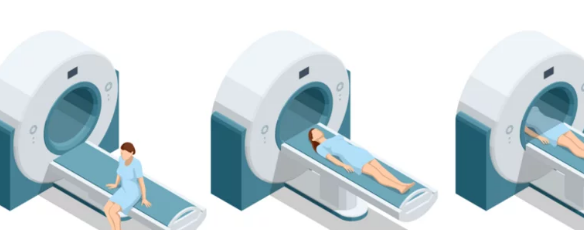Chemotherapy is one of the most widely used treatments for cancer. While powerful, its effectiveness can vary depending on the type of cancer, its stage, and how an individual’s body responds. That’s why doctors rely on advanced imaging techniques to monitor progress. Among these, Magnetic Resonance Imaging (MRI) has become one of the most valuable tools for tracking tumor response to chemotherapy.
This article explores how MRI works in monitoring chemotherapy outcomes, the different imaging techniques used, and why it is essential for guiding treatment decisions.
Why Monitoring Tumor Response Matters
Chemotherapy aims to shrink or destroy cancer cells, but not all tumors respond the same way. Regular monitoring helps doctors:
- Determine if chemotherapy is working as intended
- Decide whether to continue, change, or stop treatment
- Detect resistance to chemotherapy early
- Reduce unnecessary side effects from ineffective treatment
- Plan additional therapies such as surgery or radiation
Traditional methods like physical exams and blood tests provide limited information. Imaging, especially MRI, offers a clear view inside the body to evaluate how tumors are behaving over time.
Why MRI Is Ideal for Tracking Chemotherapy Response
MRI stands out from other imaging tools such as CT scans or X-rays because it provides:
- High-resolution soft tissue images: Perfect for visualizing tumors in the brain, breast, liver, and pelvis.
- No radiation exposure: Safer for repeated scans over the course of treatment.
- Functional insights: Advanced MRI techniques can measure not only tumor size but also biological activity.
How MRI Tracks Tumor Changes During Chemotherapy
1. Measuring Tumor Size (Morphological Imaging)
The most straightforward use of MRI is to measure whether a tumor is shrinking. Radiologists compare baseline scans taken before treatment with follow-up scans during chemotherapy.
2. Functional Imaging Techniques
Modern MRI goes beyond size measurement to show how tumors respond at a biological level:
- Diffusion-Weighted Imaging (DWI): Tracks how water molecules move in tissues. Tumor cells often restrict water movement, so changes in diffusion patterns may indicate treatment success.
- Dynamic Contrast-Enhanced MRI (DCE-MRI): Uses contrast dye to analyze blood flow in tumors. Since chemotherapy affects blood supply, this method shows how well drugs are cutting off a tumor’s nutrient source.
- Magnetic Resonance Spectroscopy (MRS): Evaluates the chemical composition of tumors. Changes in metabolic activity can reveal early responses before size reduction is visible.
- Functional MRI (fMRI): Useful for brain tumors, showing how treatment affects both the tumor and surrounding functional brain areas.
3. Whole-Body MRI
For cancers that spread (metastasize), whole-body MRI allows doctors to track multiple tumors across different organs without exposing patients to radiation.
Benefits of Using MRI to Monitor Chemotherapy
- Early detection of response: MRI can reveal changes at the cellular level before tumors physically shrink.
- Personalized treatment: Helps doctors tailor chemotherapy regimens based on how a patient’s tumor responds.
- Reduced unnecessary toxicity: If a tumor shows no response, doctors can switch treatments sooner, sparing patients from side effects.
- Better surgical planning: MRI results guide decisions about whether surgery is possible after chemotherapy.
Limitations and Challenges
Despite its benefits, MRI has some challenges:
- Cost: More expensive than some other imaging options.
- Availability: Advanced MRI techniques may not be available in all hospitals.
- Contrast agent concerns: Some scans require gadolinium-based dye, which may not be suitable for patients with kidney problems.
- Interpretation variability: Highly specialized radiologists are needed for accurate analysis.
Examples of Cancer Types Where MRI Is Valuable
- Breast cancer: DCE-MRI is highly effective in assessing early tumor shrinkage.
- Brain cancer (gliomas): MRI tracks both tumor volume and functional brain areas to protect during further treatment.
- Prostate cancer: Multiparametric MRI provides detailed information about tumor behavior.
- Liver cancer: MRI evaluates how well chemotherapy and targeted therapies block blood supply to tumors.
- Bone and soft tissue cancers: Whole-body MRI helps track metastatic spread.
Future of MRI in Chemotherapy Monitoring
Researchers are working on even more advanced applications of MRI, such as:
- Radiomics and AI-driven MRI: Using artificial intelligence to detect subtle changes invisible to the human eye.
- Molecular imaging: MRI combined with molecular markers to track tumor genetics and metabolism.
- Hybrid imaging techniques: Combining MRI with PET scans for both structural and metabolic insights.
These innovations could revolutionize how doctors monitor chemotherapy, leading to more precise and personalized cancer care.
Final Thoughts
MRI has become an essential tool in tracking tumor response to chemotherapy. By going beyond simple size measurements, it provides deep insights into how tumors react at both structural and biological levels. For cancer patients, this means more accurate monitoring, fewer unnecessary treatments, and better chances of receiving therapies tailored to their specific needs.
While not without limitations, MRI continues to play a growing role in cancer care. As technology advances, it promises to make chemotherapy monitoring even more precise and effective—helping doctors stay one step ahead in the fight against cancer.
Also Read :
